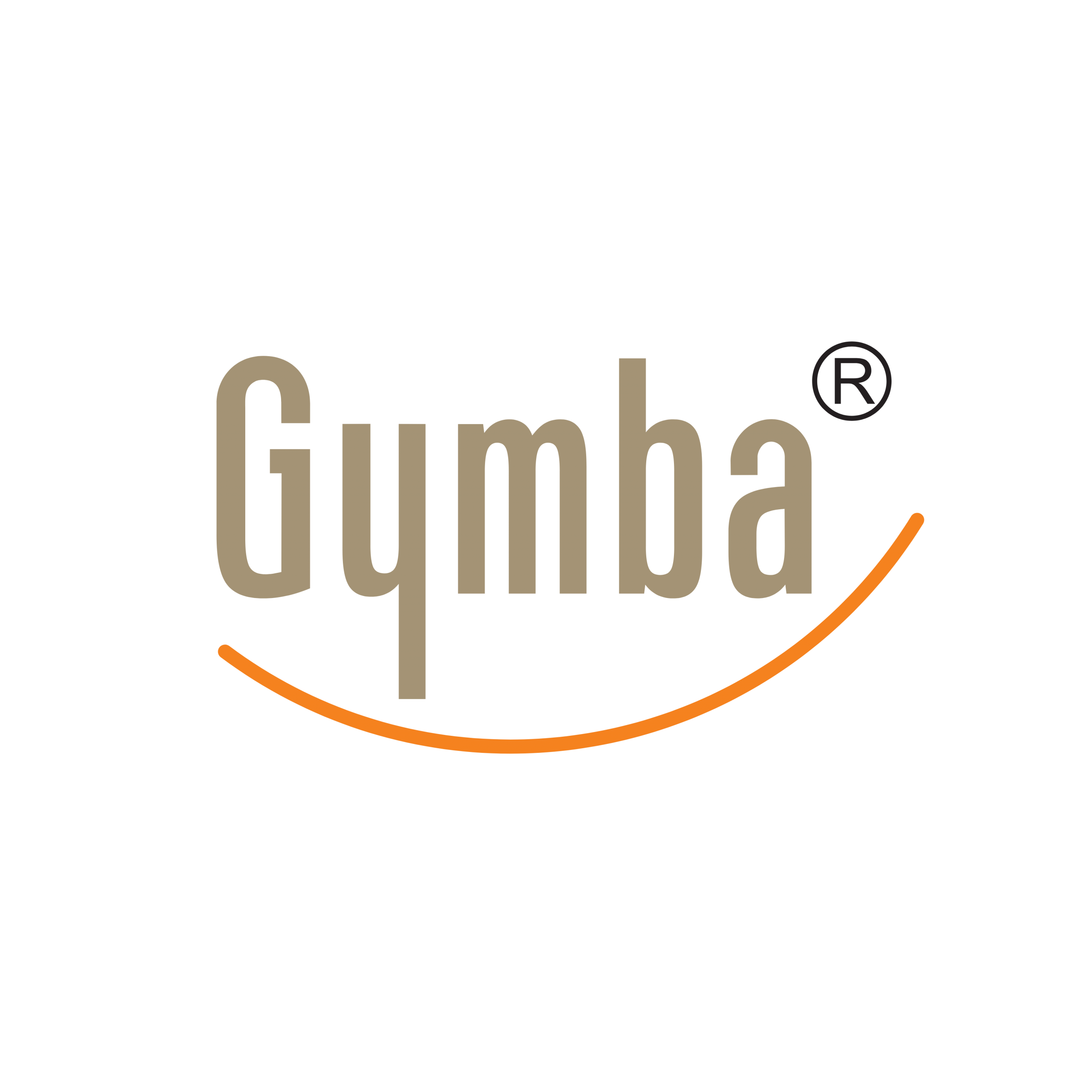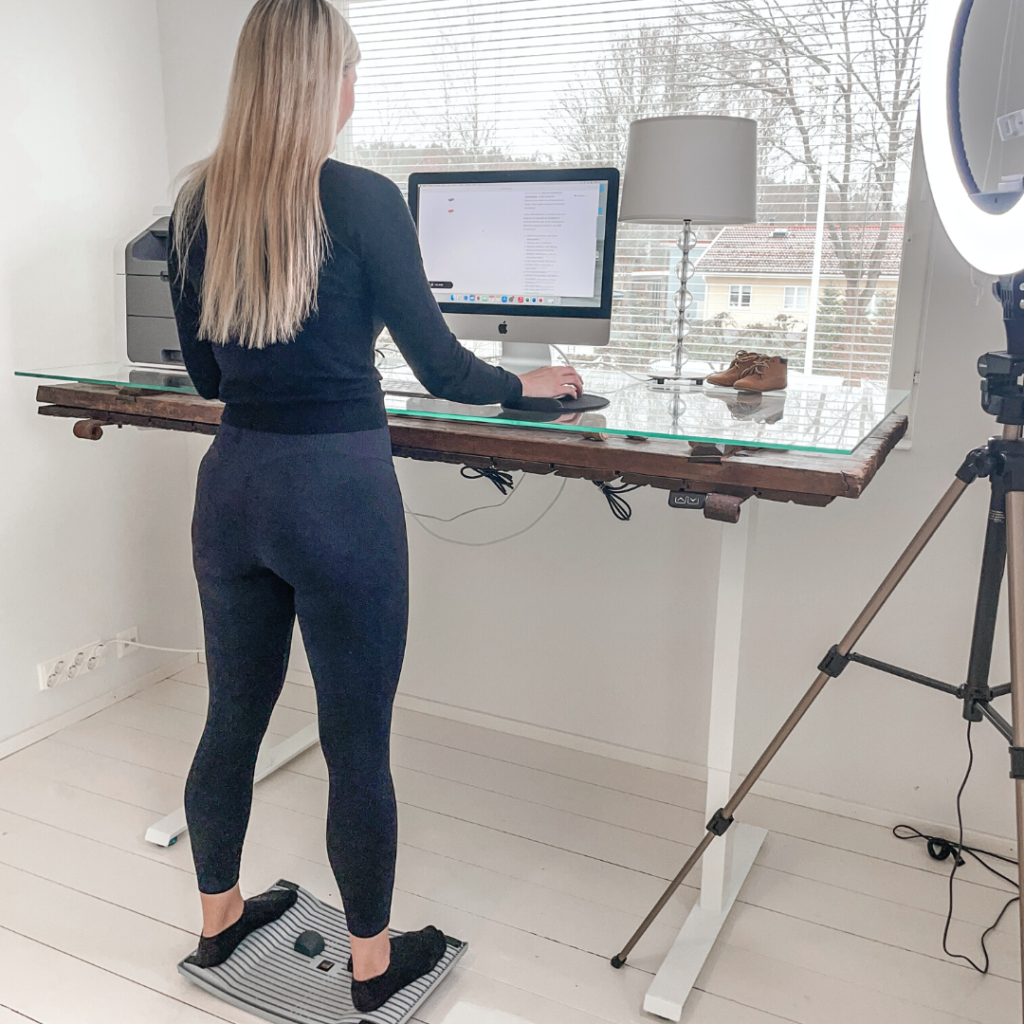Back pain has become an unwelcome companion for many office workers, with countless hours spent hunched over keyboards taking a toll on our spines. If you’re one of the millions experiencing work-related back discomfort, you might be surprised to learn that a simple solution could be right under your feet. Balance boards are increasingly recognised as effective tools for combating back pain while working. These versatile platforms don’t just make standing more comfortable, they actively engage your body in ways that can significantly reduce discomfort and improve your overall wellbeing. Let’s explore how incorporating this simple device into your workday might be the back-saving change you’ve been looking for.
Why sitting is causing your back pain
Our bodies weren’t designed for the modern office lifestyle. When we sit for extended periods, several problematic things happen simultaneously. The natural curve of your spine flattens, placing uneven pressure on your intervertebral discs. Your hip flexors tighten, pulling on your lower back and creating imbalance. Perhaps most concerning, your core muscles, which should be supporting your spine, gradually weaken from disuse.
The longer we maintain static sitting positions, the more our bodies suffer. Blood circulation diminishes, muscles become stiff, and the stabilising muscles around your spine grow increasingly ineffective. This creates a perfect storm for developing chronic back pain.
Poor posture compounds these issues, with many of us unconsciously slumping forward as the day progresses. This forward head position places tremendous strain on the neck and upper back, while rounded shoulders create tension that radiates through the entire back.
Even with an ergonomic chair, prolonged sitting creates passive muscle patterns that follow us when we stand. Your body essentially forgets how to maintain proper alignment, leading to discomfort that persists beyond working hours.
How does a balance board work?
A balance board introduces controlled instability into your standing position. Unlike traditional flat surfaces, balance boards feature a curved or elevated base that creates a subtle rocking or tilting motion. This design requires your body to make continuous micro-adjustments to maintain stability.
These constant adjustments activate your core stabilising muscles, particularly those deep postural muscles that support your spine. When standing on a balance board designed for office use, your body naturally engages the transverse abdominis, multifidus, and pelvic floor muscles, creating a supportive muscular corset around your spine.
The dynamic movement also promotes improved circulation throughout your lower body. As you subtly shift weight and make minor movements, blood flow increases to areas that typically become stagnant during static standing or sitting.
Perhaps most importantly, balance boards encourage proper alignment. To maintain stability, your body naturally seeks its optimal posture, with shoulders relaxed, spine lengthened, and weight evenly distributed. This proprioceptive feedback helps retrain your body’s awareness of correct positioning, countering the harmful patterns developed through prolonged sitting.
5 benefits of using a balance board
Strengthened core muscles: Balance boards actively engage the deep stabilising muscles of your core, particularly those supporting your spine. Unlike traditional abdominal exercises that target surface muscles, the subtle adjustments required on a balance board activate those deeper postural muscles that prevent back pain. This engagement happens naturally throughout your workday, without requiring dedicated exercise time.
Improved posture: When standing on a balance board, your body intuitively seeks proper alignment to maintain stability. This helps correct the forward head position and rounded shoulders common among office workers. By encouraging a neutral spine position, balance boards reduce the strain on your back muscles and help reprogram your body’s postural habits.
Reduced disc pressure: Dynamic standing on a balance board distributes pressure more evenly across your intervertebral discs compared to static sitting or standing. This movement helps circulate nutrients to your discs while preventing the compression that contributes to disc-related back pain.
Enhanced focus and productivity: The subtle physical engagement required by a balance board increases blood flow and stimulates your brain. Many users report improved concentration and mental clarity when using a balance board at work. The gentle movement helps channel restless energy that might otherwise manifest as distraction or fidgeting.
Increased calorie expenditure: While not primarily a fitness tool in the office context, balance boards do increase your metabolic rate compared to sitting. This modest but consistent increase in energy expenditure contributes to overall health and can help counteract the negative metabolic effects of sedentary work.
Getting started with your balance board
If you’re new to balance boards, begin gradually. Start with 10-15 minute sessions a few times throughout your workday. Place your balance board on a non-slip surface near your standing desk, ensuring you have enough space to move comfortably.
For your first sessions, position your desk or a stable surface within reach so you can stabilise yourself if needed. Stand with feet shoulder-width apart, knees slightly bent, and focus on maintaining a neutral spine position. Allow your body to find its natural rhythm of subtle movement rather than forcing dramatic motions.
As you grow more comfortable, gradually increase your balance board time. Many experienced users work up to alternating between 25-30 minutes on the balance board and regular standing or sitting. Listen to your body and take breaks when needed, particularly in the beginning.
Remember that proper footwear matters. Flat, flexible shoes provide the best connection to the board and allow your feet to make natural adjustments. Avoid high heels or shoes with aggressive arch support when using your balance board.
The key to success is consistency rather than duration. Regular short sessions will yield better results than occasional long periods on the board.
Common questions about balance boards
Is a balance board difficult to use? Balance boards come in varying difficulty levels. Those designed specifically for office use typically offer moderate instability that most people can master within a few days. If you have concerns about stability, start near a wall or desk for support.
How much space do I need? Most office-friendly balance boards require minimal space, typically just the area where you would normally stand. Allow some additional room for comfortable movement, particularly in front and behind you.
What should I wear? Flat, flexible shoes work best with balance boards. Many users prefer thin-soled shoes that allow your feet to sense the board’s movements clearly. Some prefer to use their balance board in socks, though this depends on your comfort level and office environment.
Will it work with my existing desk? Balance boards are compatible with any ergonomic standing desk solution. If you’re currently using a traditional seated desk, consider a sit-stand converter before adding a balance board to your workspace.
How quickly will I notice improvements? Many users report feeling immediate benefits in terms of comfort and engagement. However, meaningful improvements in posture and back pain typically emerge after 2-3 weeks of consistent use as your body adapts to this new way of working.
Incorporating a balance board into your work routine represents a simple yet effective step toward better back health. By promoting active standing, proper alignment, and core engagement, these versatile tools help counteract the harmful effects of prolonged sitting. At Gymba, we’ve seen countless users transform their work experience through the introduction of dynamic standing with our Gymba board and Gymba laptop stand for ergonomic positioning. If back pain has been affecting your workday, this might be the accessible, practical solution you’ve been searching for.

